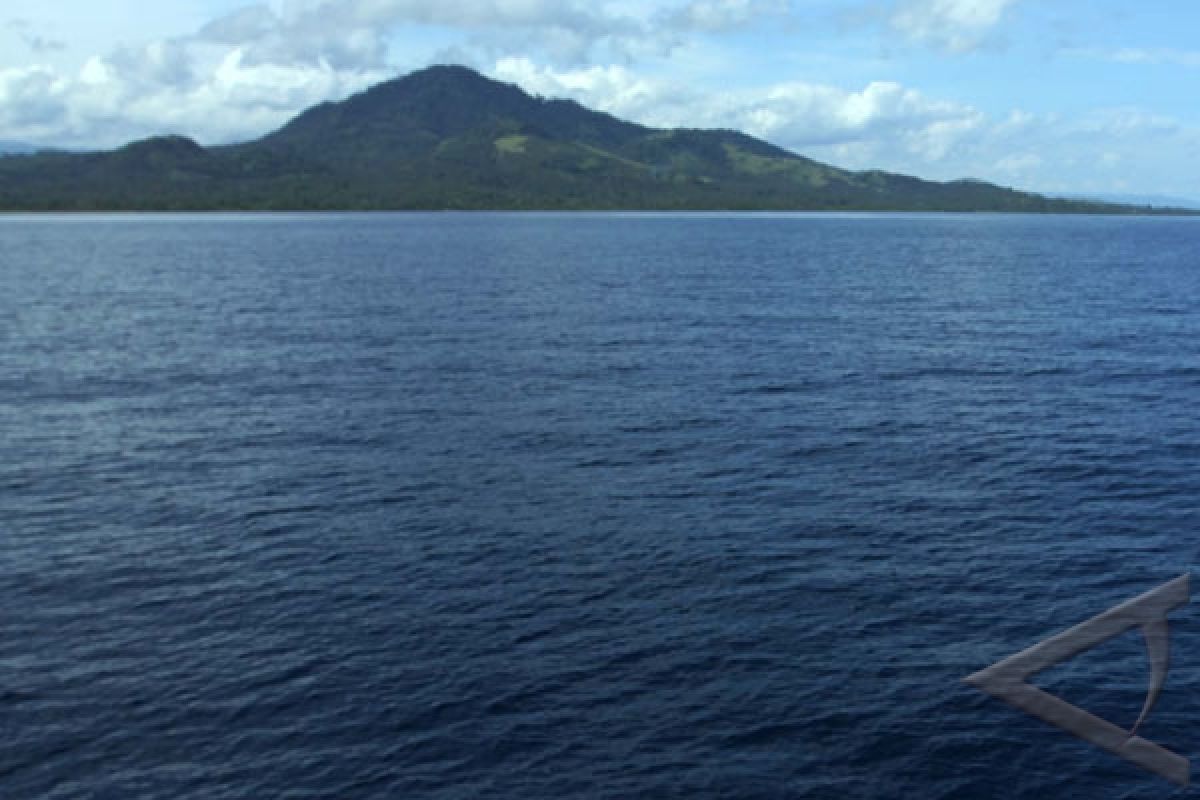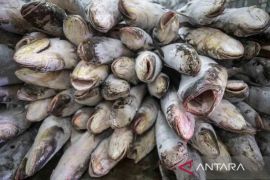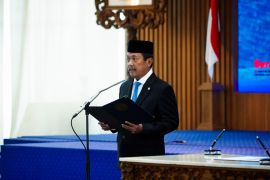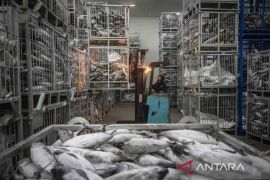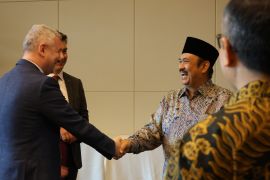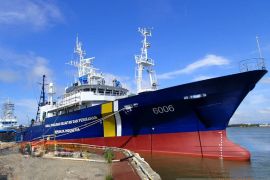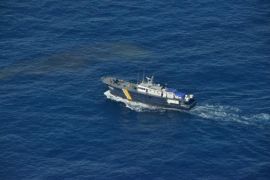As around 70 percent of Indonesia`s territory consists of water, it is but logical if Marine Affairs and Fisheries Minister Fadel Muhammad has the ambition of making Indonesia one of the world`s biggest fish producers.
For 2011, the ministry has set its fishery production target at 12.26 million tons, or an increase of 13 percent from 10.85 million tons in 2010. Indonesia`s fish production in 2009 was 9.82 million tons.
Speaking in a discussion on "The Fishery Outlook 2011" held in Jakarta early February 2011, the minister said the government has set a target of fishery production at 22.39 million tons by 2014, while aquaculture 16.86 million tons.
This year, the volume of aquaculture production is expected at 6,847,500 tons, the number of quality fingerlings is 4.2 billion, and seaweed seedlings 350,420 tons.
To support the target, the government has developed adequate infrastructure and facilities for aquaculture activities in some 116 districts/cities, according to data from the ministry. The areas include 70 brackish areas, 116 fresh water, and 81 coastal areas.
Indonesia earned 2.66 billion US dollars from its fish exports in 2010, an increase of 8.05 percent from 2.46 billion US dollars in 2009.
The ministry has set a target of fish export value at a total of 3.2 billion US dollars in 2011.
The 2008 exports of fisheries products reached US$2.6 million, said the ministry`s Overseas Marketing Director of the Ministry of Marine and Fisheries Affairs Saut P Hutagalung early last year.
According to Hutagalung, his ministry still applied previous export marketing policy which included maintaining Indonesia`s traditional export markets in the United States, Japan and the European Union.
The government also planned to expand the export markets to potential regions such as the Middle East, Central Asia, Africa and Eastern Europe, he said.
Last year, Indonesia was ranked 11th on the list of the world`s fishery exporter countries.
"Indonesia`s market share in the world`s fishery exports accounts for 1.74 percent of the world`s total fishery exports," Djoko Purnomo, head of the fishery export affairs of the Trade Ministry`s Directorate General of External Trade, said last May 2010.
The country`s fishery exports were dominated by shrimps, followed by frozen fish, fresh fish, fillet, and fish. Among major exporter provinces include East Java, Jakarta, North Sumatra, Lampung, Central Java, South Sulawesi, Bali, Maluku, North Sulawesi and Central Sulawesi.
According to an estimation, the biggest fish exporting country in 2007 was China with 11 percent, followed by Norway seven percent, and Thailand six percent, while Indonesia with only two percent in 2007, ranking only the 12th in the world`s fish exports.
As a country having huge marine resource potential, the livelihoods of the majority of the Indonesian people are related to the fishery sector.
Therefore, Marine Affairs and Fisheries Minister Fadel Muhammad recently reminded that the production increase should also be followed by a rise in fish consumption.
The ministry said in a press statement early February 2011 that Indonesia`s fish consumption in late 2010 reached 30.47 kg per capita annually, an increase from 29.08 kg per capita in 2009.
The People`s Coalition for Fishery Justice (Kiara) Secretary General M Riza Damanik was of the view that the government needed to set a quota of nine million tons of fish both for domestic consumption and for industry alone.
The nine million tons should consist of 6 million tons for domestic consumption and 3 million tons for fishery industries at home to meet their need for raw materials, he said in September 2010.
Data of the Ministry of Maritime Affairs and Fisheries showed that in the 1998 - 2008 period fish consumption of domestically produced fish increased 25 percent.
The standard of fish consumption based on the Food and Agricultural Organization (FAO) is 30 kg per capita per year, according to him.
In Indonesia which has a population of over 220 million, fish consumption per capita per year has reached 30.17 kg.
The NGO activist regretted the fact that at present people in Indonesia still consumed beef more than fish due to the high rate of meat imports from other countries, including Australia.
According to GreenFact website, in 2006 the global production from fishing and aquaculture combined reached approximately 144 million tonnes, of which 110 million were for human consumption worldwide.
The latest data on global fisheries and aquaculture could be found in "The State of World Fisheries and Aquaculture 2010" report which was published coinciding with the opening of the 29th session of the UN Committee on Fisheries which held at the FAO`s headquarters in Rome, early February 2011.
According to the report, aquaculture was dominated by production from the Asia/Pacific region, accounting for 89% of global production and 79% in terms of value.
The UN`s latest report also shows global consumption of fish has hit a record high, reaching an average of 17kg per person.
Fisheries and aquaculture supplied the world with about 145m tonnes in 2009, providing about 16% of the population`s animal protein intake, the report said as quoted by BBC news recently. (*)
Reporter: Fardah
Editor: Fardah Assegaf
Copyright © ANTARA 2011
